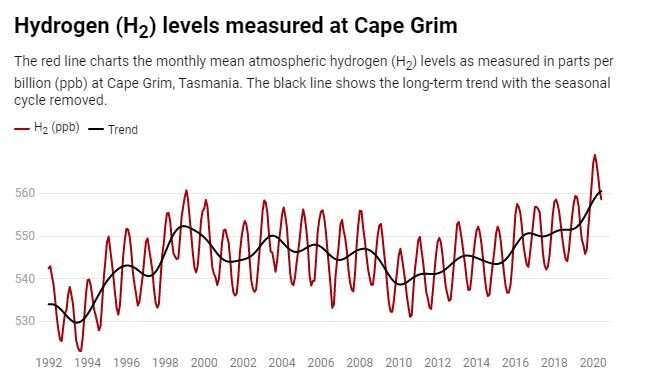by Rob Nikolewski, The San Diego Union-Tribune

Credit: CC0 Public Domain
It took 32 months to complete but the transfer operations that moved canisters filled with spent radioactive fuel, or waste, from wet storage pools to a newly constructed dry storage facility at the San Onofre Nuclear Generating Station wrapped up Friday.
Shortly before 5 a.m., workers lowered the 73rd and final canister into its assigned enclosure at the north end of the plant, known as SONGS for short.
At commercial nuclear plants, after fuel used to generate electricity loses its effectiveness, operators place the assemblies in a metal rack that is lowered into a pool, typically for about five years. Once cooled, the fuel can be transferred to a dry storage facility, which is generally considered a safer place for it.
Officials Southern California Edison, the operator at SONGS, said completing the transfers is a key part of the company's eight-year plan to dismantle most of the structures at the plant, which has not produced power since 2012 and is being decommissioned.
"The safe completion of this storage campaign ... ends the largest canister loading campaign ever in the U.S.," Vince Bilovsky, Edison's deputy decommissioning officer, said in an email. "But our work won't truly be done until all canisters at SONGS are relocated off-site to a federally licensed storage or disposal facility."
Longtime critics of Edison were not cheering the news, though.
"It's a sad day," said Ray Lutz, national coordinator for the advocacy group Citizens' Oversight. "People say, well, (the waste issue) is fine right now and we'll deal with it later. But this is what they've said ever since they started this nuclear industry—we'll figure it out later, the five favorite words."
Transfer operations at SONGS began in January 2018 but seven months later, one of the 50-ton canisters was accidentally left suspended while being lowered into its storage cavity. Resting almost 20 feet from the floor, the canister was left perched on an inner-ring of the cavity for about 45 minutes, unsupported by rigging and lifting equipment.
The canister was eventually lowered safely and Edison officials said workers and the public were in no danger if the canister had fallen. The incident, which came to light after an industrial safety worker came forward six days later at a public meeting, led to a special inspection by the U.S. Nuclear Regulatory Commission.
The commission later fined Edison $116,000 and chided the company for failing "to establish a rigorous process to ensure adequate procedures, training and oversight guidance."
Edison and its chief contractor, Holtec International, instituted a series of enhanced safety and work protocols to ensure another "near-miss" did not occur and after suspending all transfers for 11 months, it resumed moving the canisters in July 2019.
Since then, 44 canisters have been transferred at SONGS, with No. 73 on Friday marking the final move via slow-moving transporters. Another 50 canisters sit in a separate dry storage facility nearby. All told, there are 3.55 million pounds of used-up fuel at the plant, located between the San Onofre Beach and Interstate 5.
As thorny as the transfer operations were, a more complicated issue remains: How long the canisters at SONGS will stay there.
SONGS is not unique. About 80,000 metric tons of waste from commercial nuclear plants are stored across the country—121 sites in 35 states—because the federal government has not constructed a repository to store any of it.
"Our commitment remains ensuring spent nuclear fuel is safely stored and that it can be transported to an off-site facility in the future," Doug Bauder, Edison's chief nuclear officer, said in a statement.
About $15 billion has been spent to construct the Yucca Mountain site in the Nevada desert but shortly before it was scheduled to open, the Obama administration cut off funding, heeding calls from then-Senate Majority Leader Harry Reid, D-Nev., and other elected officials in the Silver State long opposed to the facility.
Some in Congress have called for reopening Yucca and the Trump administration had proposed spending $120 million to look into re-licensing the site but President Donald Trump earlier this year reversed course, saying in a tweet, "Nevada, I hear you on Yucca Mountain."
In recent years, discussion has turned to finding alternate, "interim" sites to store waste from SONGS and other nuclear plants.
A recently passed spending package in the U.S. House of Representatives included $27.5 million to develop a "robust" interim storage program. Rep. Mike Levin, D-Calif., has called for establishing a set of federal guidelines that would put waste at sites like San Onofre—with large populations and in areas with earthquake hazards—at the top of the list once a storage facility becomes available.
Two private companies have applied to build interim facilities but whether those sites will actually be constructed is an open question.
One of the potential sites is in southeastern New Mexico—a partnership between Holtec and a group called the Eddy-Lea Energy Alliance that proposes to store as many as 10,000 canisters and boost the area's economy. The group is seeking a 40-year license from the NRC. But last month, New Mexico Gov. Michelle Lujan Grisham reiterated her opposition to the project in a letter to Trump, saying, "the risks for New Mexicans, our natural resources and our economy are too high."
The other possible site is near the West Texas town of Andrews. A company called Waste Control Specialists has formed a partnership to expand an already existing facility and store as much as 40,000 metric tons spent fuel. The NRC has issued an initial recommendation to license the site but opponents vow to fight final approval.
Levin assembled a task force that in June released some 30 recommendations, including establishing a federal Nuclear Waste Administration aimed at creating a better process to find sites for the nation's spent fuel stockpile.
Following an out-of-court settlement that Lutz was involved in, Edison created an expert panel of experts to look at destinations for SONGS waste. Early next year, Edison intends to release the findings of a strategic plan for possible storage sites "as well as make sure that our fuel is ready for pick up when the opportunity presents itself," Bauder said.
When the eight-year dismantlement effort at SONGS is complete, all that will remain will be the dry storage sites; a security building with personnel to look over the waste; a seawall 28 feet high, as measured at average low tide at San Onofre Beach; a walkway connecting two beaches north and south of the plant and a switch-yard with power lines.
The distinctive 200-feet-high twin domes that loom over Interstate 5 are scheduled to come down between late 2025 and 2027.
Explore further Proposal advances to store nuclear waste in New Mexico
©2020 The San Diego Union-Tribune
Distributed by Tribune Content Agency, LLC.
It took 32 months to complete but the transfer operations that moved canisters filled with spent radioactive fuel, or waste, from wet storage pools to a newly constructed dry storage facility at the San Onofre Nuclear Generating Station wrapped up Friday.
Shortly before 5 a.m., workers lowered the 73rd and final canister into its assigned enclosure at the north end of the plant, known as SONGS for short.
At commercial nuclear plants, after fuel used to generate electricity loses its effectiveness, operators place the assemblies in a metal rack that is lowered into a pool, typically for about five years. Once cooled, the fuel can be transferred to a dry storage facility, which is generally considered a safer place for it.
Officials Southern California Edison, the operator at SONGS, said completing the transfers is a key part of the company's eight-year plan to dismantle most of the structures at the plant, which has not produced power since 2012 and is being decommissioned.
"The safe completion of this storage campaign ... ends the largest canister loading campaign ever in the U.S.," Vince Bilovsky, Edison's deputy decommissioning officer, said in an email. "But our work won't truly be done until all canisters at SONGS are relocated off-site to a federally licensed storage or disposal facility."
Longtime critics of Edison were not cheering the news, though.
"It's a sad day," said Ray Lutz, national coordinator for the advocacy group Citizens' Oversight. "People say, well, (the waste issue) is fine right now and we'll deal with it later. But this is what they've said ever since they started this nuclear industry—we'll figure it out later, the five favorite words."
Transfer operations at SONGS began in January 2018 but seven months later, one of the 50-ton canisters was accidentally left suspended while being lowered into its storage cavity. Resting almost 20 feet from the floor, the canister was left perched on an inner-ring of the cavity for about 45 minutes, unsupported by rigging and lifting equipment.
The canister was eventually lowered safely and Edison officials said workers and the public were in no danger if the canister had fallen. The incident, which came to light after an industrial safety worker came forward six days later at a public meeting, led to a special inspection by the U.S. Nuclear Regulatory Commission.
The commission later fined Edison $116,000 and chided the company for failing "to establish a rigorous process to ensure adequate procedures, training and oversight guidance."
Edison and its chief contractor, Holtec International, instituted a series of enhanced safety and work protocols to ensure another "near-miss" did not occur and after suspending all transfers for 11 months, it resumed moving the canisters in July 2019.
Since then, 44 canisters have been transferred at SONGS, with No. 73 on Friday marking the final move via slow-moving transporters. Another 50 canisters sit in a separate dry storage facility nearby. All told, there are 3.55 million pounds of used-up fuel at the plant, located between the San Onofre Beach and Interstate 5.
As thorny as the transfer operations were, a more complicated issue remains: How long the canisters at SONGS will stay there.
SONGS is not unique. About 80,000 metric tons of waste from commercial nuclear plants are stored across the country—121 sites in 35 states—because the federal government has not constructed a repository to store any of it.
"Our commitment remains ensuring spent nuclear fuel is safely stored and that it can be transported to an off-site facility in the future," Doug Bauder, Edison's chief nuclear officer, said in a statement.
About $15 billion has been spent to construct the Yucca Mountain site in the Nevada desert but shortly before it was scheduled to open, the Obama administration cut off funding, heeding calls from then-Senate Majority Leader Harry Reid, D-Nev., and other elected officials in the Silver State long opposed to the facility.
Some in Congress have called for reopening Yucca and the Trump administration had proposed spending $120 million to look into re-licensing the site but President Donald Trump earlier this year reversed course, saying in a tweet, "Nevada, I hear you on Yucca Mountain."
In recent years, discussion has turned to finding alternate, "interim" sites to store waste from SONGS and other nuclear plants.
A recently passed spending package in the U.S. House of Representatives included $27.5 million to develop a "robust" interim storage program. Rep. Mike Levin, D-Calif., has called for establishing a set of federal guidelines that would put waste at sites like San Onofre—with large populations and in areas with earthquake hazards—at the top of the list once a storage facility becomes available.
Two private companies have applied to build interim facilities but whether those sites will actually be constructed is an open question.
One of the potential sites is in southeastern New Mexico—a partnership between Holtec and a group called the Eddy-Lea Energy Alliance that proposes to store as many as 10,000 canisters and boost the area's economy. The group is seeking a 40-year license from the NRC. But last month, New Mexico Gov. Michelle Lujan Grisham reiterated her opposition to the project in a letter to Trump, saying, "the risks for New Mexicans, our natural resources and our economy are too high."
The other possible site is near the West Texas town of Andrews. A company called Waste Control Specialists has formed a partnership to expand an already existing facility and store as much as 40,000 metric tons spent fuel. The NRC has issued an initial recommendation to license the site but opponents vow to fight final approval.
Levin assembled a task force that in June released some 30 recommendations, including establishing a federal Nuclear Waste Administration aimed at creating a better process to find sites for the nation's spent fuel stockpile.
Following an out-of-court settlement that Lutz was involved in, Edison created an expert panel of experts to look at destinations for SONGS waste. Early next year, Edison intends to release the findings of a strategic plan for possible storage sites "as well as make sure that our fuel is ready for pick up when the opportunity presents itself," Bauder said.
When the eight-year dismantlement effort at SONGS is complete, all that will remain will be the dry storage sites; a security building with personnel to look over the waste; a seawall 28 feet high, as measured at average low tide at San Onofre Beach; a walkway connecting two beaches north and south of the plant and a switch-yard with power lines.
The distinctive 200-feet-high twin domes that loom over Interstate 5 are scheduled to come down between late 2025 and 2027.
Explore further Proposal advances to store nuclear waste in New Mexico
©2020 The San Diego Union-Tribune
Distributed by Tribune Content Agency, LLC.



 Credit: Shutterstock
Credit: Shutterstock







